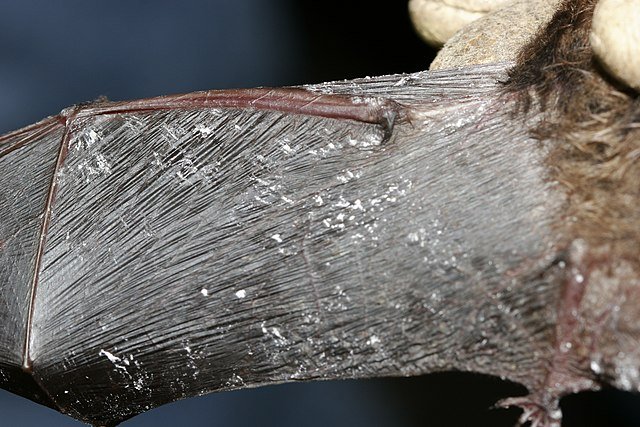
Invasive Species | Terrestrial Wildlife and Pathogens
White-nose Syndrome
Pete Pattavina, U.S. Fish and Wildlife, Bugwood.org
White-nose syndrome
(Pseudogymnoascus destructans)
French common name: le syndrome du nez blanc
First discovered in caves around Albany, NY in 2007, this invasive fungus (Pseudogymnoascus destructans) or Pd for short, grows in cold, damp environments. In bat habitat, this fungus can grow and attack the bare skin of bats while they hibernate through winter and can cause a white fuzz in affected bats hence its name. This disease causes bats to be more active mid hibernation, using up important fat stores that they need to survive through the winter. Overall, this one invasive fungus has killed millions of bats in North America, with some sites experiencing 90-100% death of bat populations.
Characteristics
Bat Behavior: Restless bats acting out of the ordinary or flying out of season.
Coloration: Powdery gray or white.
Location on body: Nose, Ears mouth and wings are often the most affected areas.
Habitat: Cold, dark and damp places such as caves.
US Fish and Wildlife Service
Key ID Features
US Fish and Wildlife Service
Bat Showing fungus around eyes and nose
US Fish and Wildlife Service
Fungus in the back hair of a bat
US Fish and Wildlife Service
Fungus on the wing of a bat
How it’s Spread
White Nose Disease is spread amongst bats through bat on bat contact or by infected cave systems. Cave systems can be contaminated with White nose by travalling bats or by humans tracking it around on their equipment. White Nose Disease is an excellent example of why it is important to Play Clean Go while caving.





